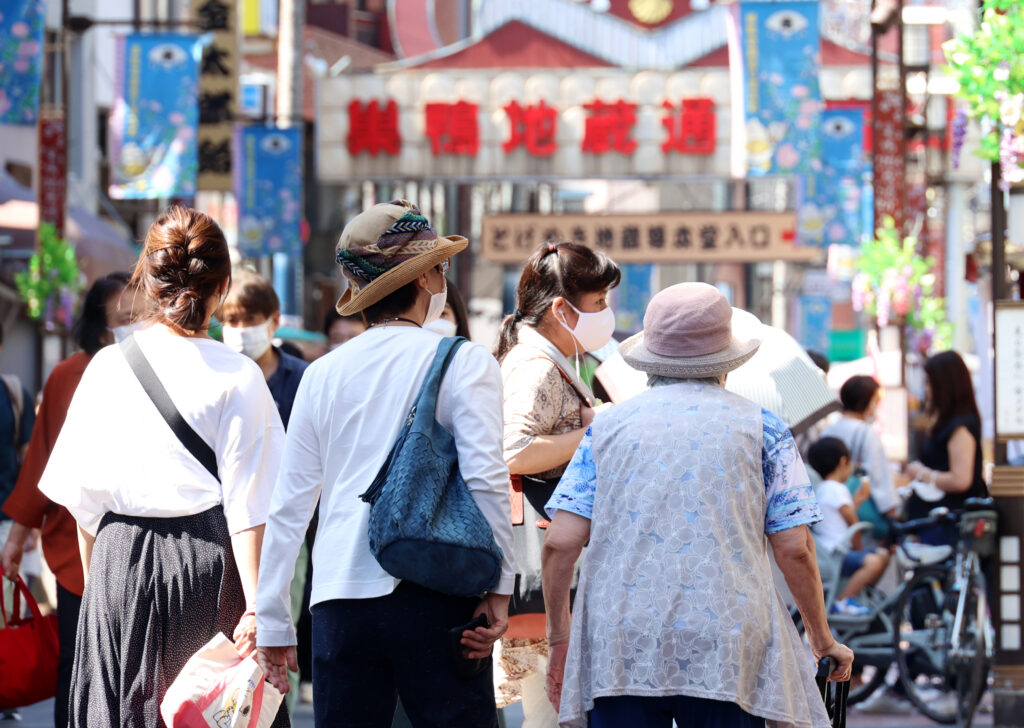Japan’s population began to decline after peaking at 128 million in 2008, registering 125 million in 2022. If this trend continues, Japan’s population is projected to decline to 63 million in 2100, half of its population in 2022. Behind the trend lies Japan’s declining birth rate.
Japan’s birth rate declined from 9.5 births per 1000 women in 2000 to 6.8 per 1000 in 2020. A declining population and birth rate coupled with long life expectancy have resulted in an aging population. The proportion of the population aged over 65 increased from 17.4 per cent in 2000 to 29.0 per cent in 2022 and is projected to rise to 41.2 per cent in 2100. In contrast, the working age population (people aged between 15 and 64) declined from 68.1 per cent of the population in 2000 to 59.4 per cent in 2022, and is projected to decline to 51.1 per cent in 2100.
There are several reasons for this depopulation. One is the high economic cost of having and raising children. This is a particularly acute problem for low-income households, in which the wage earners are often non-regular workers. According to a report on household income by the Ministry of Health, Labour and Welfare, the average disposable income of a household headed by a non-regular worker is approximately 60 per cent of one headed by a regular worker. This problem may reflect a widening income gap.
Another reason is changing lifestyles. In the past, a typical family was a man and a woman who get married before they are 30 and then have children. The wife raises these children while the husband earns an income. This pattern changed as people began to pursue their own aspirations and society began to accept diversity. Reflecting this change, the number of marriages per 1000 people declined from 10 in 1970 to 6.4 in 2000 and to 4.1 in 2022.
The consequences of the declining and aging population are substantial. Japan’s GDP is bound to decline with the decline in the working-age population unless there is a large increase in productivity. This decline can be slowed by extending the retirement age to increase the number of older workers and by increasing female participation in the workforce. But even these strategies will not solve the fundamental problem of a declining working-age population.
Labour shortages have already begun to impact various sectors and professions. An increasing number of small and medium-sized enterprises have closed because of a lack of successors. Professions that provide social and public services such as teachers, doctors and caregivers are facing acute labour shortages. The negative economic impacts of depopulation are also being felt acutely in rural areas. The negative economic impacts of an aging population will inevitably cause Japan’s living standard to decline.
The Japanese government has implemented various measures to deal with depopulation, but so far they have not been effective. Recognising the seriousness of the depopulation problem, the administration of Prime Minister Fumio Kishida formulated the ‘Direction on Strategy for Children’s Future’ in June 2023 with the objective of stopping the decline in the number of births. The accelerated plan provides young couples with financial assistance for raising children, as the high economic cost of raising children is one of the main obstacles for prospective parents.
The proposed measures include an increase in the child allowance and expanded economic assistance for child delivery and higher education. The income cap for the child allowance program, which covers children through high school, has been abolished. The plan also includes measures such as improving working environments to reduce the burden of raising children and raising the quality of nurseries. The administration is considering spending approximately 3 trillion yen (US$20 billion) on the plan each year for the next three years. But funding the plan will be a challenge for the administration in the face of huge government debt.
The Population Strategy Panel, a private panel consisting of 28 members from business, academia and other sectors, submitted a proposal titled ‘Population Vision 2100’ to Kishida in January 2024. The proposal argues that the government should aim to keep the population above 80 million people in 2100 by raising the total fertility rate.
The panel proposes establishing a new committee under the prime minister to oversee the formulation and implementation of population strategy. The proposal includes two strategies — population stabilisation and economy strengthening. The population stabilisation strategy aims to stop the trend of population decline and eventually reach a stabilised level by improving the conditions for raising children. The economy strengthening strategy aims to increase productivity by developing human resources. It suggests accepting foreign workers, particularly high-skilled foreign workers, to deal with depopulation and to improve productivity.
The proposal contains important messages and strategies to deal with depopulation. But many of these measures are not new. The proposal is valuable because it provides a comprehensive approach. What the Kishida administration needs to do is formulate and implement comprehensive policies and measures by referring to the framework presented by the Population Vision 2100. Prime Minister Kishida’s strong leadership is crucial in tackling the depopulation problem in Japan.
Shujiro Urata is Chairman at the Research Institute of Economy, Trade and Industry, and Senior Research Advisor to the President of the Economic Research Institute for ASEAN and East Asia.

